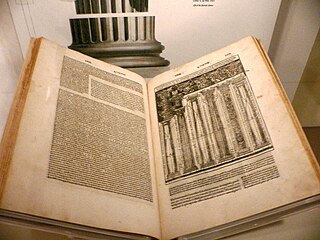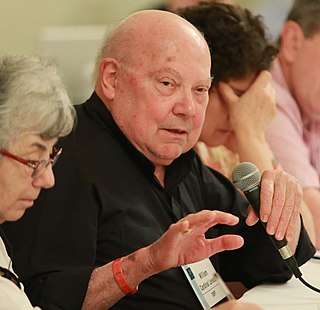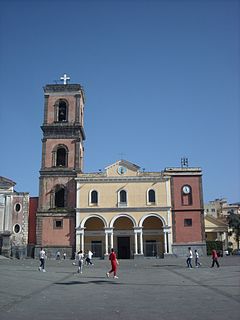Related Research Articles

Titus Livius, known as Livy in English, was a Roman historian. He wrote a monumental history of Rome and the Roman people, titled Ab Urbe Condita, ''From the Founding of the City'', covering the period from the earliest legends of Rome before the traditional foundation in 753 BC through the reign of Augustus in Livy's own lifetime. He was on familiar terms with members of the Julio-Claudian dynasty and even in friendship with Augustus, whose young grandnephew, the future emperor Claudius, he exhorted to take up the writing of history.
Pope Caius, also called Gaius, was the bishop of Rome from 17 December 283 to his death in 296. Little information on Caius is available except that given by the Liber Pontificalis, which relies on a legendary account of the martyrdom of Susanna of Rome for its information. According to legend, Caius baptized the men and women who had been converted by Tiburtius and Castulus. His legend states that Caius took refuge in the catacombs of Rome and died a martyr.
Gaius Asinius Pollio was a Roman soldier, politician, orator, poet, playwright, literary critic and historian, whose lost contemporary history provided much of the material used by the historians Appian and Plutarch. Pollio was most famously a patron of Virgil and a friend of Horace and had poems dedicated to him by both men.

Norma is a tragedia lirica or opera in two acts by Vincenzo Bellini with libretto by Felice Romani after the play Norma, ou L'infanticide by Alexandre Soumet. It was first produced at La Scala in Milan on 26 December 1831.

Saint Lawrence or Laurence was one of the seven deacons of the city of Rome, Italy, under Pope Sixtus II who were martyred in the persecution of the Christians that the Roman Emperor Valerian ordered in 258. Lawrence encountered the future Pope Sixtus II, who was of Greek origin and one of the most famous and highly esteemed teachers, in Caesaraugusta. Eventually, both left Spain for Rome. When Sixtus became the Pope in 257, he ordained Lawrence as a deacon, and though Lawrence was still young appointed him first among the seven deacons who served in the cathedral church.

The Society of Mary, a Roman Catholic Marian Society, is a congregation of brothers and priests called the Marianists or Marianist Brothers and Priests. The society was founded by William Joseph Chaminade, a priest who survived the anti-clerical persecution during the French Revolution. The society is one of the four branches of the Marianist Family. Along with the other branches, the Marianist Brothers and Priests look to Mary as a model of faith and spirituality. They believe that the best ways to live a spiritual life are to share their faith with others, work with the poor, and educate and nourish the mind, the body, and the soul.

Saint Pancras was a Roman citizen who converted to Christianity, and was beheaded for his faith at the age of fourteen, around the year 304. His name is Greek (Παγκράτιος) and means "the one that holds everything".

De architectura is a treatise on architecture written by the Roman architect and military engineer Marcus Vitruvius Pollio and dedicated to his patron, the emperor Caesar Augustus, as a guide for building projects. As the only treatise on architecture to survive from antiquity, it has been regarded since the Renaissance as the first book on architectural theory, as well as a major source on the canon of classical architecture. It contains a variety of information on Greek and Roman buildings, as well as prescriptions for the planning and design of military camps, cities, and structures both large and small. Since Vitruvius published before the development of cross vaulting, domes, concrete, and other innovations associated with Imperial Roman architecture, his ten books give no information on these hallmarks of Roman building design and technology.

Pedro Calungsod, also known as Peter Calungsod and Pedro Calonsor, was a Catholic Filipino migrant, sacristan and missionary catechist who, along with the Spanish Jesuit missionary Diego Luis de San Vitores, suffered religious persecution and martyrdom in Guam for their missionary work in 1672.

St. Sebastian is the subject of three paintings by the Italian Early Renaissance master Andrea Mantegna. The Paduan artist lived in a period of frequent plagues; Sebastian was considered protector against the plague as having been shot through by arrows, and it was thought that plague spread abroad through the air.

Posillipo is a residential quarter of Naples, southern Italy, located along the northern coast of the Gulf of Naples.

William Joseph Levada was an American cardinal of the Catholic Church. From May 2005 until June 2012, he served as Prefect of the Congregation for the Doctrine of the Faith under Pope Benedict XVI; he was the highest ranking American in the Roman Curia. He was previously the Archbishop of Portland in Oregon from 1986 to 1995, and then Archbishop of San Francisco from 1995 to 2005. While serving as archbishop, he was criticized for covering up sexual abuse by priests within his jurisdiction. Levada was created a cardinal in 2006 by Benedict XVI.

John Alexander was an American operatic tenor who had a substantial career during the 1950s through the 1980s. He had a longstanding relationship with the Metropolitan Opera in New York City, singing with that company every year between 1961 and 1987 for a total of 379 performances. He also periodically performed at the New York City Opera during his career and was a frequent presence at the Philadelphia Lyric Opera Company during the late 1950s and 1960s. Although he spent most of his career in New York City, Alexander occasionally traveled to perform as a guest artist with many of the world's leading opera houses, both in the United States and Europe. He was also an active concert singer throughout his career.
Gaius Asinius Pollio was a Roman senator and orator active during the Principate. He was ordinary consul for 23 with Gaius Antistius Vetus as his colleague. He was the oldest son of Gaius Asinius Gallus; his brother was Marcus Asinius Agrippa, consul in 25. Pollio's mother was Vipsania Agrippina. Through her, he was the half-brother of the younger Drusus.

Publius Vedius Pollio was a Roman of equestrian rank, and a friend of the Roman emperor Augustus, who appointed him to a position of authority in the province of Asia. In later life he became infamous for his luxurious tastes and cruelty to his slaves – when they displeased him, he had them fed to "lampreys" that he maintained for that purpose, which was deemed to be an exceedingly cruel act. When Vedius tried to apply this method of execution to a slave who broke a crystal cup, Emperor Augustus was so appalled that he not only intervened to prevent the execution but had all of Pollio's valuable drinking vessels deliberately broken. This incident, and Augustus's demolition of Vedius's mansion in Rome he inherited in his will, were frequently referred to in antiquity in discussions of ethics and of the public role of Augustus.
Giovanni Breviario, was an Italian operatic tenor, particularly associated with Italian dramatic roles.

Enrico Tamberlik was an Italian tenor who sang to great acclaim at Europe and America's leading opera venues. He excelled in the heroic roles of the Italian and French repertories and was renowned for his powerful declamation and clarion high notes.
The gens Asinia was a plebeian family at ancient Rome, which rose to prominence during the first century BC. The first member of this gens mentioned in history is Herius Asinius, commander of the Marrucini during the Social War. The Asinii probably obtained Roman citizenship in the aftermath of this conflict, as they are mentioned at Rome within a generation, and Gaius Asinius Pollio obtained the consulship in 40 BC.
Saint Pietro Parenzo was a mayor of the Italian Comune of Orvieto during the 12th century. He was assassinated in 1199 by the adherents of Catharism and became honored as a saint and wonderworker after his death. He is the patron saint of the city of Orvieto.

The Basilica of Santa Maria a Pugliano is the main church in Ercolano and the oldest church in the area around Mount Vesuvius.
References
- 1 2 St. Pollio
- ↑ Deborah Mauskopf Deliyannis, "Ravenna in Late Antiquity"
- ↑ San Pollione di Cibali